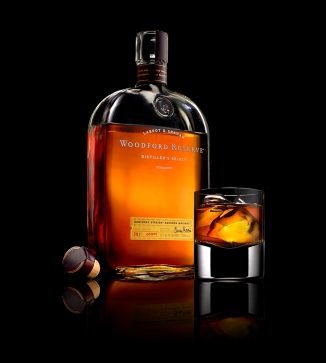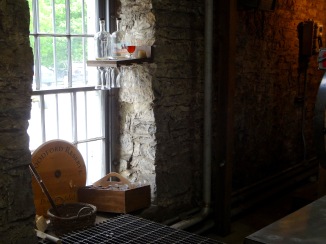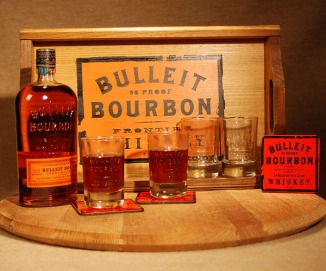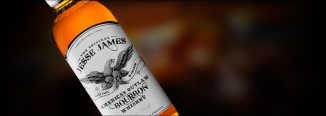 WITH AT LEAST nine distinct permutations, Revolution Brewing’s Eugene Porter is one of the most hardworking and wealth-sharing beers in the Chicago scene. Fitting, considering the beer’s name comes from union leader and Socialist party candidate Eugene Debs. The undisputed pinnacle of that pyramid (to date) is E. NorMA Gene, a barrel-aged imperial porter weighing in at 12% ABV. As one would expect it’s served in a snifter with a scant few patches of dark tan head atop an irredeemably black body. A weighty capstone for any monument, but one set upon strong foundations.
WITH AT LEAST nine distinct permutations, Revolution Brewing’s Eugene Porter is one of the most hardworking and wealth-sharing beers in the Chicago scene. Fitting, considering the beer’s name comes from union leader and Socialist party candidate Eugene Debs. The undisputed pinnacle of that pyramid (to date) is E. NorMA Gene, a barrel-aged imperial porter weighing in at 12% ABV. As one would expect it’s served in a snifter with a scant few patches of dark tan head atop an irredeemably black body. A weighty capstone for any monument, but one set upon strong foundations.
On the nose E. NorMA loads up on chocolate malts piqued briefly with tart red fruit, some barrel tannins, caramelized sugar, and a smoothing veil of oak. When lightly chilled it has just enough carbonation–extremely fine bubbles, yet still enough to perk up the mouthfeel and keep its granulation from becoming too gritty. The caramel found in the basic Eugene is also present, though here its viscosity is more akin to molasses. Its body bursts with sweetness and malts thoroughly kilned, though much more roasted than toasted, more chocolate than blackened. Oak and sweet corn (by way of bourbon) also figure prominently early on before succumbing to gobs of vanilla and cacao. The finish is balanced passingly by solid alcohol warmth and some slickness to cut through its girth. Hops, meanwhile, are a remote dream (IBU of 60 probably could/should have been 70). It also follows that the base Eugene uses Belgian yeast: though not really prominent in flavor, one can sense a little of its powder and a slight cloying texture towards the end that doesn’t match up with traditional chocolate or milk sweeteners.
As the beer warms, though, an increasing interplay between chocolate and vanilla upon a rising bourbon oak floor make it ever more akin to Goose Island’s Bourbon County Brand Stout. The template is dependable, derived from the largest shadow cast of the Midwest’s barrel-aged beers, but it also makes one wonder at what point Eugene trades in his porter party colors for stout’s. And although it is delicious all around, E. Norma is ultimately a little too sugary sweet. Derived exclusively from first runnings of the wort, its decadence is like a double chocolate cake of which the eating is divine but the remembering is almost too much.
Perhaps the stout vs. porter distinction is merely academic, since E. NorMA remains one of Chicago’s top-flight barrel-aged dark ales. But attending more to the principles of its base brew might have balanced E. Norma’s sweetness with a little more tangy muscle. Then again, Socialists have never played much to the middle.
Served: On tap (Revolution Taproom, Chicago)
Rating: 90
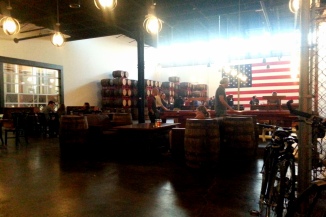
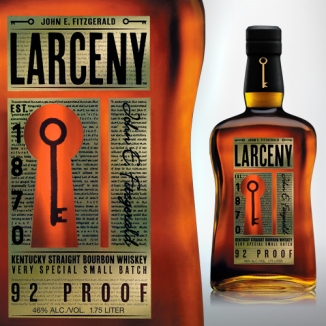 THIS LATEST EFFORT from Heaven Hill claims a long legacy—back to 1870, unsurprisingly enough—and namedrops Pappy Van Winkle amidst its well-toned promotional material. The relevant details are that it’s a 92 proof straight bourbon distilled with wheat as its complementary grain in place of rye with the goal of a smoother profile. Perhaps, but only with water—taken neat, the deep amber Larceny is rather too pointed in its spice and barrel char. Once given some time to spread out and diluted just a touch, its mouthfeel becomes much rounder and more approachable, revealing vanilla, a bit of honey, some corn sweetness, and a slight flowery flourish in the lasting finish, where some roughness of the barrel notes return. Though aged for a six-year profile, Larceny has the pop of a young bourbon, tannic with fruit skins and a little husky. An arresting profile altogether and somehow more composed than its key descriptors would suggest, its steadied by a sturdy body and underlying notes of caramel. Altogether a reasonable buy at approximately $25, especially compared to some ill-fitted grain bills that retail for twice the price. That’s your cue, Koval…
THIS LATEST EFFORT from Heaven Hill claims a long legacy—back to 1870, unsurprisingly enough—and namedrops Pappy Van Winkle amidst its well-toned promotional material. The relevant details are that it’s a 92 proof straight bourbon distilled with wheat as its complementary grain in place of rye with the goal of a smoother profile. Perhaps, but only with water—taken neat, the deep amber Larceny is rather too pointed in its spice and barrel char. Once given some time to spread out and diluted just a touch, its mouthfeel becomes much rounder and more approachable, revealing vanilla, a bit of honey, some corn sweetness, and a slight flowery flourish in the lasting finish, where some roughness of the barrel notes return. Though aged for a six-year profile, Larceny has the pop of a young bourbon, tannic with fruit skins and a little husky. An arresting profile altogether and somehow more composed than its key descriptors would suggest, its steadied by a sturdy body and underlying notes of caramel. Altogether a reasonable buy at approximately $25, especially compared to some ill-fitted grain bills that retail for twice the price. That’s your cue, Koval…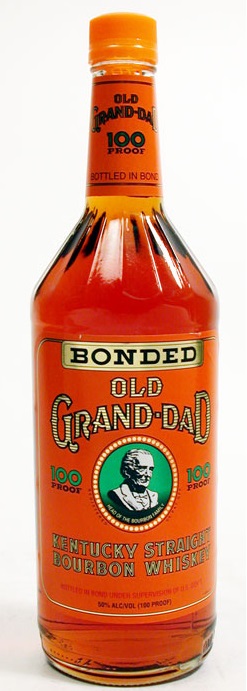
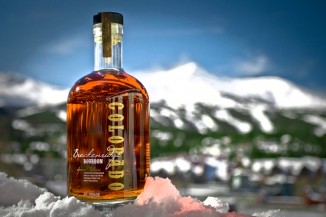
 WITH AT LEAST nine distinct permutations, Revolution Brewing’s Eugene Porter is one of the most hardworking and wealth-sharing beers in the Chicago scene. Fitting, considering the beer’s name comes from union leader and Socialist party candidate Eugene Debs. The undisputed pinnacle of that pyramid (to date) is E. NorMA Gene, a barrel-aged imperial porter weighing in at 12% ABV. As one would expect it’s served in a snifter with a scant few patches of dark tan head atop an irredeemably black body. A weighty capstone for any monument, but one set upon strong foundations.
WITH AT LEAST nine distinct permutations, Revolution Brewing’s Eugene Porter is one of the most hardworking and wealth-sharing beers in the Chicago scene. Fitting, considering the beer’s name comes from union leader and Socialist party candidate Eugene Debs. The undisputed pinnacle of that pyramid (to date) is E. NorMA Gene, a barrel-aged imperial porter weighing in at 12% ABV. As one would expect it’s served in a snifter with a scant few patches of dark tan head atop an irredeemably black body. A weighty capstone for any monument, but one set upon strong foundations.
